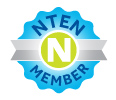In my previous post I talked about how venture capitalists see the next generation of technology investments. Others share a common view of the future:
"Connective and pervasive technologies are enabling new forms of human and machine interactions and relationships; they will present business [& nonprofit] institutions with a host of new possibilities for organizing people, processes, relationships and knowledge." (Institute for the Future)In a Social Source world, the participants (vendors, consultants, customers) define new possibilities for organizing people, processes, relationships and knowledge with the goal or improving their own organization, and as a by-product, make their innovations available to a broader community, accelerating the adoption of their innovation. This is a function of open source licenses and open, modular architectures based on standards.
The key here is that organizations pursue their own interests. The Social Source ecosystem and licensing structure, which enable organizations to pursue their own interests better, faster, cheaper, makes it easy and automatic to share innovations with no action on the part of the "customer." The customer just needs to pursue their own interests.
The second notable issue is the critical nature of CRM to this vision of a new world-- organizing people, processes, relationships and knowledge.
This is why our fist piece of software is CiviCRM, a constituent relationship management engine. It is all about providing a common, open framework for organizing people and relationships. We fully expect other software will use CiviCRM as a common CRM repository.
Ultimately, this makes interoperation and compatibility between a CiviCRM-based knowledge management system and perhaps a CiviCRM-based donor database easier and more powerful.

